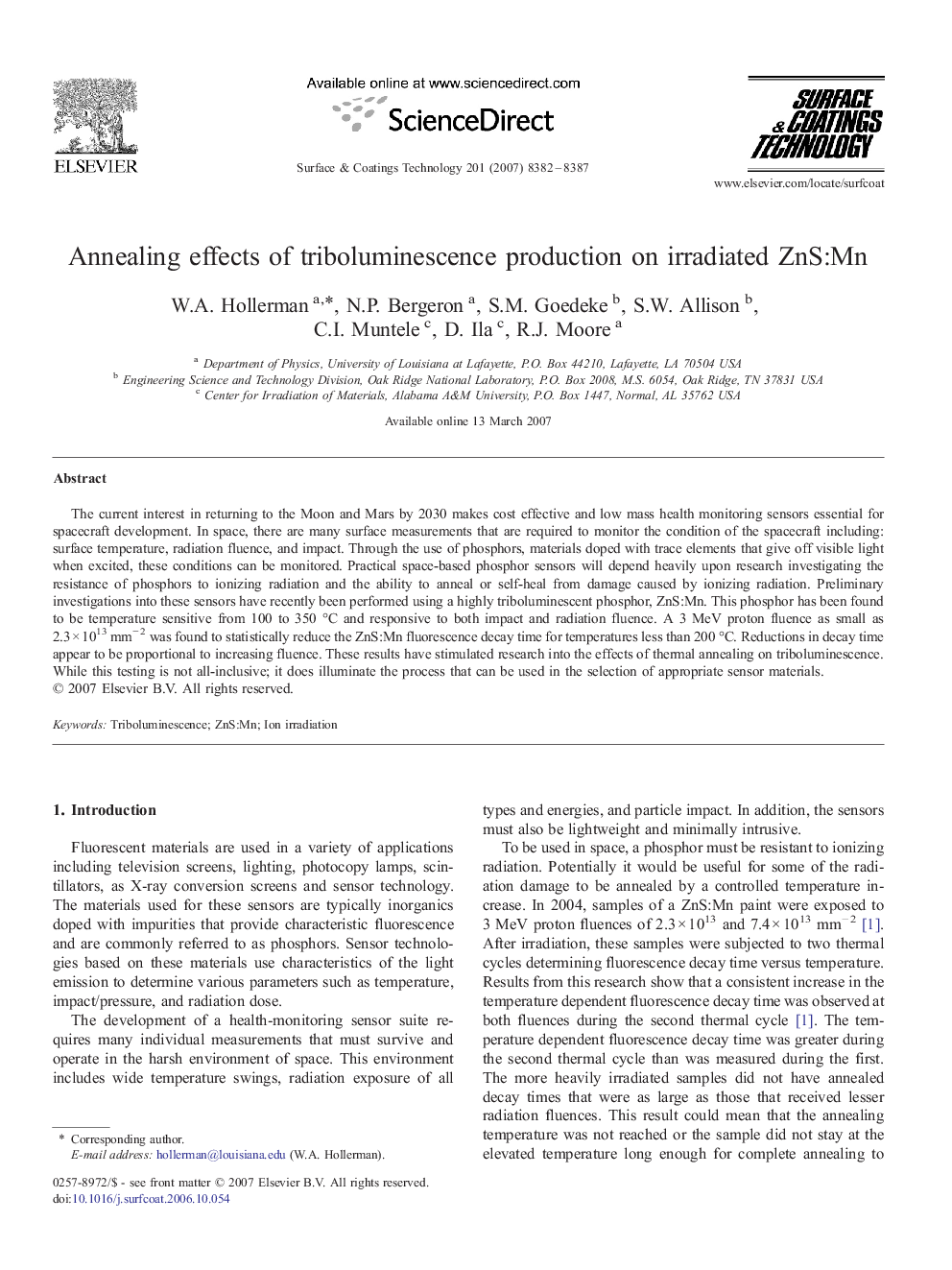| Article ID | Journal | Published Year | Pages | File Type |
|---|---|---|---|---|
| 1663027 | Surface and Coatings Technology | 2007 | 6 Pages |
The current interest in returning to the Moon and Mars by 2030 makes cost effective and low mass health monitoring sensors essential for spacecraft development. In space, there are many surface measurements that are required to monitor the condition of the spacecraft including: surface temperature, radiation fluence, and impact. Through the use of phosphors, materials doped with trace elements that give off visible light when excited, these conditions can be monitored. Practical space-based phosphor sensors will depend heavily upon research investigating the resistance of phosphors to ionizing radiation and the ability to anneal or self-heal from damage caused by ionizing radiation. Preliminary investigations into these sensors have recently been performed using a highly triboluminescent phosphor, ZnS:Mn. This phosphor has been found to be temperature sensitive from 100 to 350 °C and responsive to both impact and radiation fluence. A 3 MeV proton fluence as small as 2.3 × 1013 mm− 2 was found to statistically reduce the ZnS:Mn fluorescence decay time for temperatures less than 200 °C. Reductions in decay time appear to be proportional to increasing fluence. These results have stimulated research into the effects of thermal annealing on triboluminescence. While this testing is not all-inclusive; it does illuminate the process that can be used in the selection of appropriate sensor materials.
